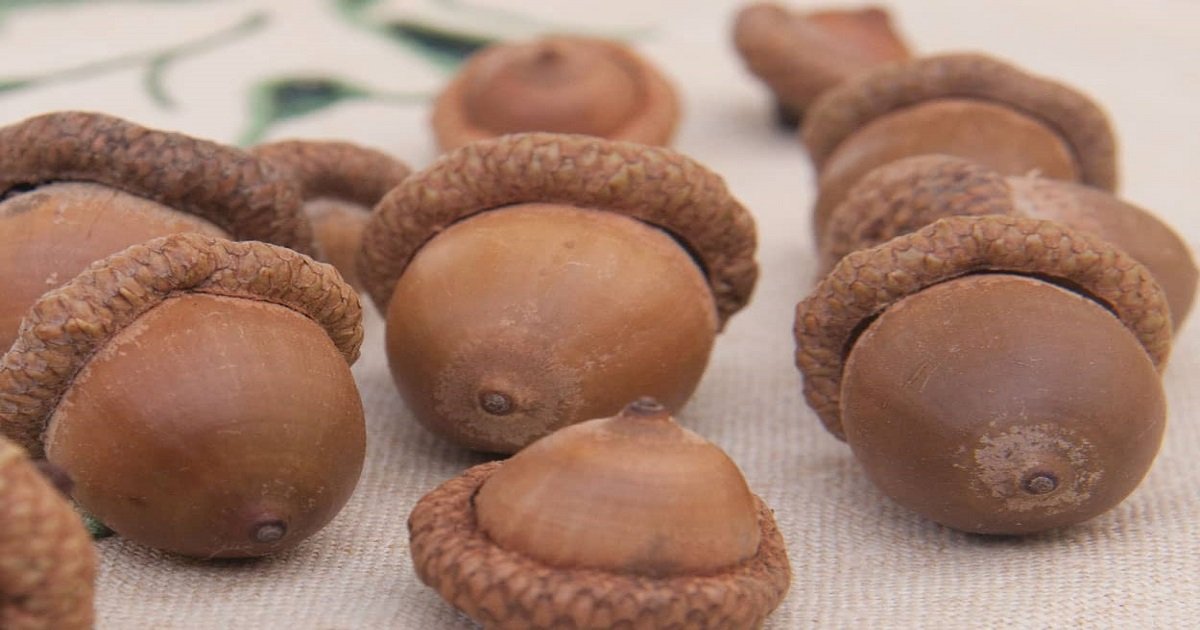Introduction to Acorn Nuts
Acorn nuts, also known as cap nuts or crown nuts, are small yet crucial components in various industries and everyday applications. While they might seem insignificant at first glance, these nuts play a vital role in securing bolts and screws, ensuring stability and safety in numerous structures and mechanisms.
What are Acorn Nuts?
Acorn nuts are specially designed fasteners with a domed shape, resembling the shape of an acorn. They are typically hexagonal or cap-shaped, with a smooth, rounded top that covers the end of a bolt or screw.
These nuts are commonly used to provide a finished appearance, as well as to protect the threads of the fastener from external damage.
Acorn nuts come in various materials such as steel, stainless steel, brass, and nylon, catering to different requirements based on factors like strength, corrosion resistance, and aesthetics. They are available in a range of sizes to accommodate different bolt diameters and thread pitches.
The History of Acorn Nuts
The concept of acorn nuts dates back centuries, with early examples found in ancient civilizations where artisans crafted rudimentary versions from materials like bronze and iron. However, the modern design and widespread use of acorn nuts can be attributed to advancements in manufacturing techniques during the Industrial Revolution.
As industrialization progressed, the demand for reliable fastening solutions grew, leading to the standardization and mass production of acorn nuts. Today, these nuts are integral components in various industries, contributing to the stability and functionality of countless structures and machines.
How Acorn Nuts Work
Acorn nuts function by covering the exposed threads of bolts or screws, providing a smooth and rounded surface that prevents snagging and reduces the risk of injury. This design also helps distribute pressure evenly, reducing the likelihood of damage to the fastener or the materials being joined.
One of the primary advantages of acorn nuts is their aesthetic appeal. The domed shape adds a decorative touch to assemblies, making them ideal for visible applications where appearance matters.
Additionally, acorn nuts offer some level of protection against corrosion and environmental elements, especially when made from corrosion-resistant materials like stainless steel.
However, it’s essential to consider the limitations of acorn nuts. Due to their domed shape, they may not provide as much torque as standard hex nuts, making them less suitable for high-tension applications. Additionally, the smooth surface of acorn nuts may make them prone to loosening over time, necessitating periodic inspection and tightening.
Types of Acorn Nuts
Acorn nuts come in various types and configurations to suit different needs and preferences. The two primary variations are hex acorn nuts and cap acorn nuts.
- Hex acorn nuts feature a hexagonal shape, allowing for easy installation and removal with a standard wrench or socket.
- Cap acorn nuts have a smooth, rounded top with no visible hexagonal shape, offering a sleek and streamlined appearance.
In addition to different shapes, acorn nuts may also come with various coating options for enhanced durability and corrosion resistance. Common coatings include zinc plating, chrome plating, and powder coating, each offering unique benefits depending on the application environment.
Applications of Acorn Nuts
Acorn nuts find applications in a wide range of industries and settings, thanks to their versatility and reliability. Some common uses include:
- Automotive Industry: Acorn nuts are commonly used in automotive assemblies to secure components such as wheels, hubcaps, and exhaust systems.
- Construction Sector: In construction, acorn nuts are employed to fasten structural elements like steel beams, trusses, and scaffolding.
- Household Uses: Acorn nuts can be found in various household items and furniture, providing a decorative and functional finishing touch.
How to Install Acorn Nuts
Installing acorn nuts is a straightforward process, but it requires attention to detail to ensure proper functionality and safety. Here’s a step-by-step guide:
- Ensure that the threads of the bolt or screw are clean and free from debris.
- Place the acorn nut over the exposed threads, ensuring that it sits flush against the surface.
- Use a wrench or socket to tighten the nut securely until it is snug against the material being fastened.
- Avoid over-tightening, as this can strip the threads or damage the fastener.
- Periodically inspect the installation to check for any signs of loosening or damage, and re-tighten if necessary.
It’s also essential to follow any specific instructions provided by the manufacturer, especially regarding torque specifications and recommended installation practices.
Maintenance and Care Tips
To ensure the longevity and performance of acorn nuts, proper maintenance and care are essential. Here are some tips to keep in mind:
- Regularly inspect acorn nuts for signs of corrosion, damage, or loosening.
- Clean dirty or rusted nuts with a mild detergent and a soft brush, then rinse thoroughly and dry completely.
- Apply a protective coating or lubricant to acorn nuts exposed to harsh environments or corrosive substances.
- Replace damaged or worn acorn nuts promptly to prevent structural integrity issues or safety hazards.
By following these maintenance practices, you can prolong the lifespan of acorn nuts and maintain optimal performance in your applications.
Buying Guide for Acorn Nuts
When purchasing acorn nuts, several factors should be considered to ensure that you select the right product for your needs. Here are some essential considerations:
- Material: Choose acorn nuts made from high-quality materials like stainless steel or brass for enhanced durability and corrosion resistance.
- Size: Select acorn nuts that match the diameter and thread pitch of the bolts or screws you’ll be using them with.
- Coating: Consider the environmental conditions and application requirements when choosing a coating option for added protection against corrosion and wear.
- Quantity: Determine the quantity of acorn nuts needed for your project, taking into account any extras for spares or future replacements.
- Brand Reputation: Opt for reputable brands known for producing reliable and high-quality fasteners.
You can purchase acorn nuts from various sources, including hardware stores, online retailers, and specialty fastener suppliers. Be sure to compare prices and read customer reviews to ensure you’re getting the best value for your money.
DIY Projects with Acorn Nuts
Acorn nuts can inspire creativity in DIY enthusiasts, offering endless possibilities for projects both practical and decorative. Here are some ideas to spark your imagination:
- Custom Furniture: Use acorn nuts as decorative accents or functional fasteners in custom furniture pieces like tables, chairs, and shelves.
- Garden Art: Incorporate acorn nuts into outdoor sculptures, planters, or garden decorations for a whimsical touch.
- Jewelry Making: Create unique jewelry pieces by incorporating acorn nuts into necklaces, bracelets, earrings, or keychains.
- Home Décor: Use acorn nuts as embellishments for picture frames, mirrors, lampshades, or curtain tiebacks to add a rustic or industrial flair.
With a bit of creativity and some basic tools, you can transform acorn nuts into one-of-a-kind creations that showcase your personality and style.
Innovations and Future Trends
As technology and manufacturing processes continue to evolve, we can expect to see ongoing innovations in the design and production of acorn nuts. Future trends may include:
- Advanced Materials: Development of new materials with enhanced strength, durability, and corrosion resistance properties.
- Smart Fastening Solutions: Integration of sensors or RFID technology into acorn nuts for real-time monitoring of fastener integrity and performance.
- Sustainable Practices: Adoption of eco-friendly manufacturing processes and materials to reduce the environmental impact of acorn nut production.
By staying informed about these trends and advancements, users can make informed decisions and adapt to changes in the fastener industry.
Environmental Impact of Acorn Nuts
Like all manufactured products, acorn nuts have environmental implications throughout their lifecycle, from raw material extraction to disposal. While they may seem small and insignificant, their widespread use contributes to resource consumption, energy usage, and waste generation.
To mitigate the environmental impact of acorn nuts, manufacturers and consumers can adopt sustainable practices such as:
- Using recycled materials or eco-friendly alternatives in production.
- Optimizing manufacturing processes to reduce energy consumption and emissions.
- Implementing end-of-life recycling programs to reclaim and repurpose used acorn nuts.
- Choosing durable and long-lasting products to minimize the need for frequent replacements.
By prioritizing sustainability and environmental stewardship, we can minimize the ecological footprint of acorn nuts and contribute to a more sustainable future.
Safety Regulations and Standards
To ensure the safety and reliability of acorn nuts, various regulatory agencies and standards organizations have established guidelines and specifications for their design, manufacture, and use. These regulations may cover aspects such as:
- Material composition and mechanical properties
- Coating thickness and adhesion
- Thread fit and engagement
- Torque requirements and installation procedures
Compliance with these standards helps ensure that acorn nuts meet minimum performance requirements and are suitable for their intended applications. Users should familiarize themselves with relevant regulations and standards to ensure the proper selection and use of acorn nuts in their projects.
Conclusion
Acorn nuts are small but essential components in various industries and applications, offering both functional and aesthetic benefits. Understanding their design, functionality, and applications can help users make informed decisions and ensure optimal performance in their projects.
By following best practices for installation, maintenance, and sustainability, we can maximize the lifespan and efficiency of acorn nuts while minimizing their environmental impact.



